Video: A journey like no other as Flying Scotsman reclaims the route over Ribblehead
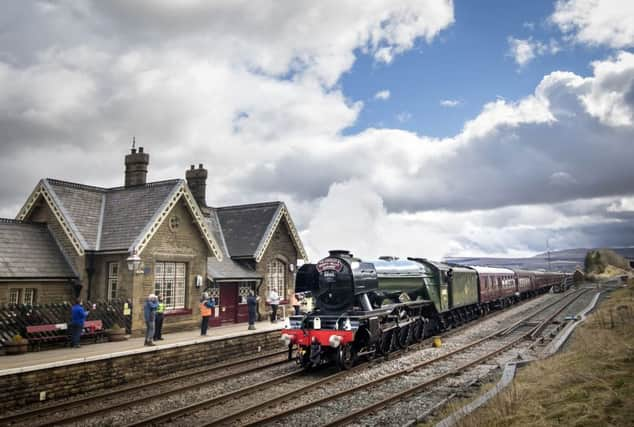

On board the world’s most famous train, passengers crane their necks in anticipation of the railway network’s most spectacular and iconic view.
They travelled far and wide in order to be part of this much anticipated page in transport history.
Advertisement
Hide AdAdvertisement
Hide AdNo less intrepid are all those spectators turning the rolling fields of the Yorkshire Dales into a tapestry of colour. The remoter they are, the better the uninterrupted view of this graceful rain making its serene journey across God’s own county.
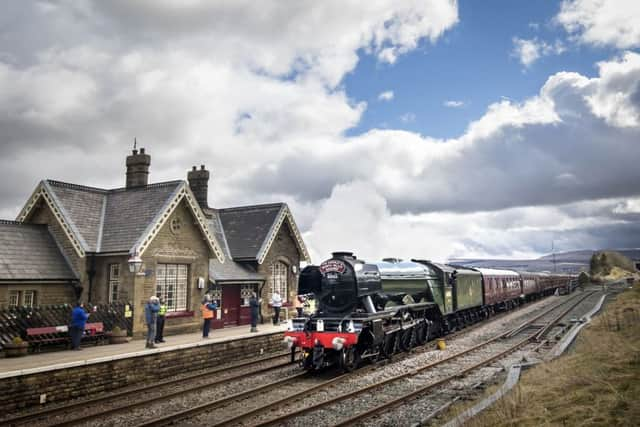

As smoke billowing from the Flying Scotsman’s funnel dissipates on the gentle breeze under clearing clouds, it reveals a sight to behold - crowd scenes not witnessed in these parts since the Tour de France in 2014.
Advertisement
Hide AdAdvertisement
Hide AdQuintessential Yorkshire, this is a journey like no other - the full reopening of the 73-mile Settle to Carlisle railway after a major landslip forced its closure in Cumbria last winter.
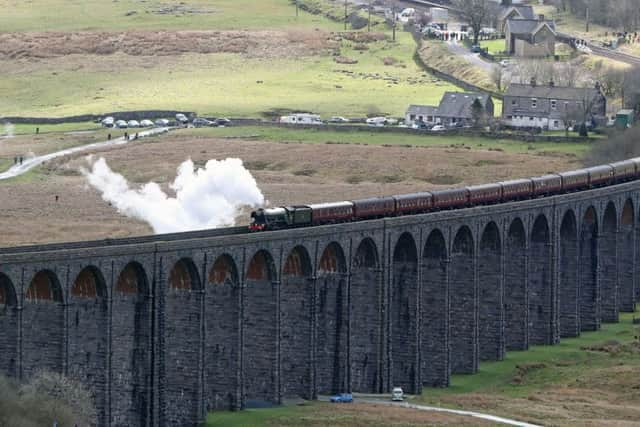

Not just a celebration of the £23m viaduct built into the side of a hill at the virtually inaccessible Eden Brows but a celebration of Britain’s priceless railway heritage - the Flying Scotsman trip was, in fact, inspired and organised by Keighley and Worth Valley Railway to mark its forthcoming 150th anniversary.
In short, Flying Scotsman passengers were going back in time on the railway line that refused to close to mark a great feat of 21st century civil engineering.
As the locomotive, built in Doncaster in 1923, arrives at Keighley Station, the lament of three Scottish bagpipers serenades passengers - and all those spectators taking selfies in front of the acclaimed engine and its sparking green livery.
Advertisement
Hide AdAdvertisement
Hide AdOn board, the first of nine tonnes is already being shovelled laboriously to enable the locomotive, the first to reach a speed of 100mph, to power more sedately up the inclines of the Dales - and the long ascent into Cumbria. It’s a true labour of love.
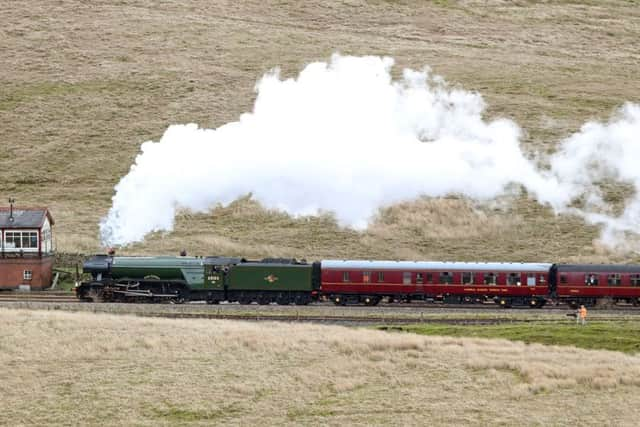

Driven by Noel Hartley from Oxenhope to Keighley,, he passes this responsibility to Leeds-born Ron Smith, 70, whose father and grandfather had had the honour of steering the Flying Scotsman in its pomp.
Resplendent in his blue overalls as he polishes the locomotive’s brass nameplate, he says the soon-to-depart trip is “just another day in the office”.
If only. American train enthusiast Nick Parker, 26, cashed in his air miles and flew from South Carolina to Yorkshire for five days so he could be a volunteer steward serving guests in first class.
Advertisement
Hide AdAdvertisement
Hide AdProudly wearing the Keighley and Worth Valley Railway’s striking red tie, with a Yorkshire white rose in his waistcoat’s buttonhole, he says: “I’m having a great time.”
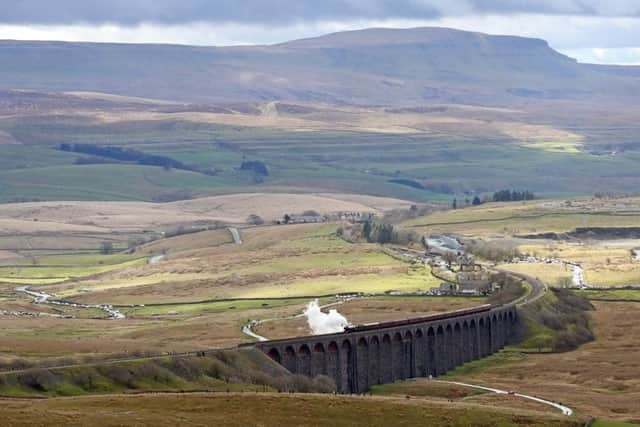

He means it. So, too, are the passengers as the Flying Scotsman builds up a head of steam before an elongated water stop at Hellifield.
They include Margaret and Norman Wooler from Carleton, near Skipton, who were given this trip of a lifetime by relatives as an early birthday present. Words, they say, will never do justice to the occasion. “It’s fantastic,” they concur.
Yet, while the rhythmical sound of the engine sends young lambs scurrying for cover, there’s no deterring the crowds filming the occasion on mobile phones - even when the spring weather becomes more inclement. Some look precariously perched on ladders and walls.
Advertisement
Hide AdAdvertisement
Hide AdOne lady, well-protected from the elements, greets the train with a large Union flag waved with alacrity. It’s that kind of day. No less enthusiastic are the Settle children watching from their school, their own morning lessons invigorated by this stirring sight.
For Network Rail chairman Sir Peter Hendy who is visibly moved by this response, he is blunt when explaining the significance of the decision to effectively build a viaduct into the Cumbrian hillside to keep this increasingly popular - and significant - passenger, freight and tourism route open for another generation to enjoy.
“If this had happened in the past, it would have been the excuse to close the line,” he explains.
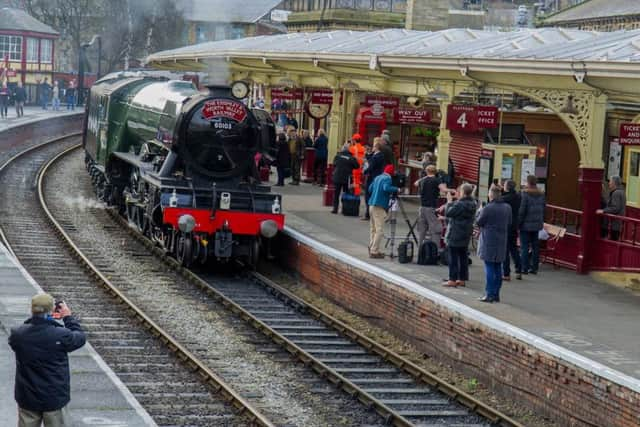

“You are seeing a renaissance of the railway that people would not have believed 20 or 30 years ago.”
Advertisement
Hide AdAdvertisement
Hide AdThis is self-evident as the Flying Scotsman approaches the very spot where 500,000 tonnes of slowly shifting earth threatened to send the whole railway crashing into the river Eden 70 metres below.
As the train passes over a 100 metre section of track now encased in concrete, the locomotive slows and The Yorkshire Post’s photographer implores Network Rail’s orange army of workmen lining the trackside - the unsung heroes - to cheer for the cameras.
They do - and passengers reciprocate by applauding to express their appreciation to all those who worked tirelessly to get the Settle to Carlisle railway back on track.